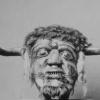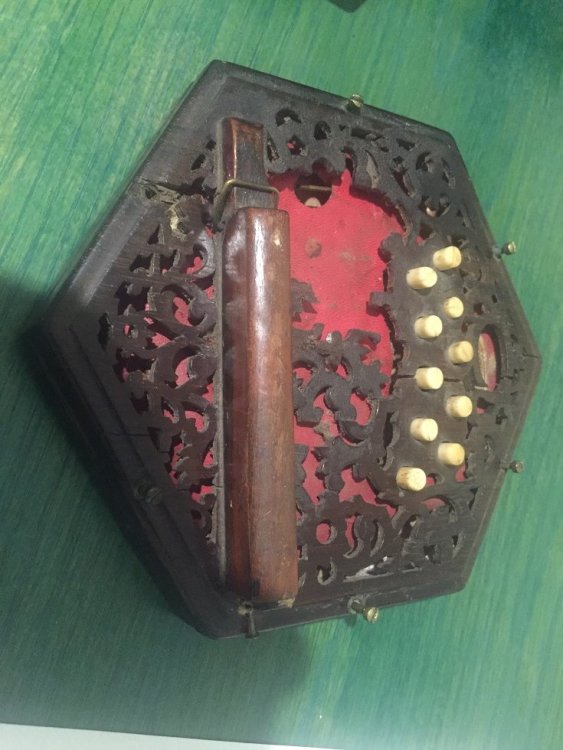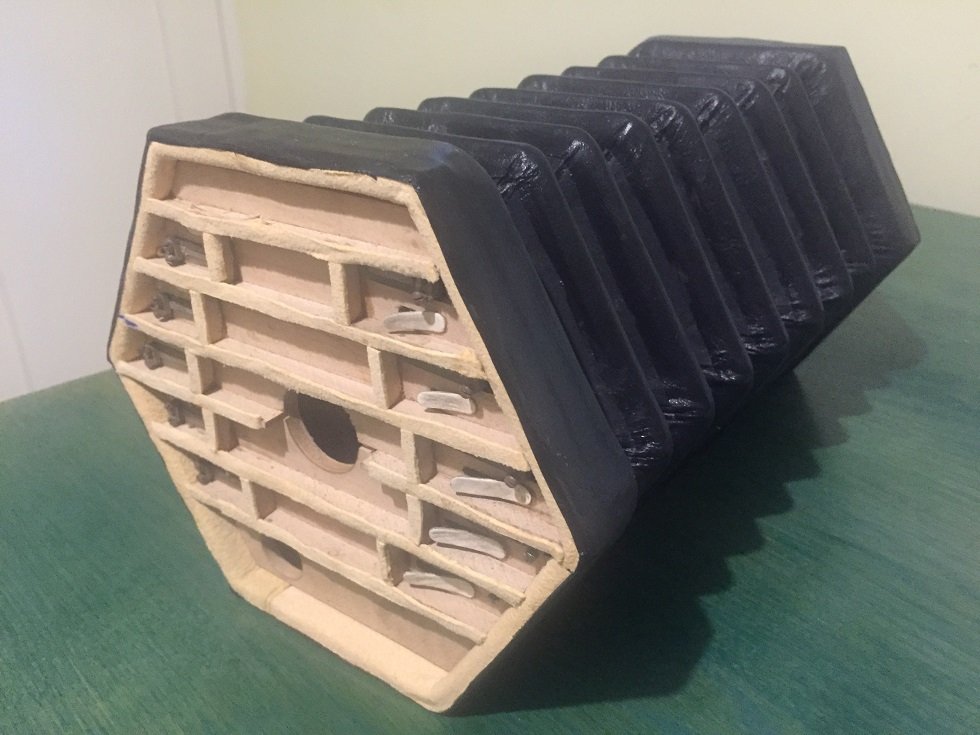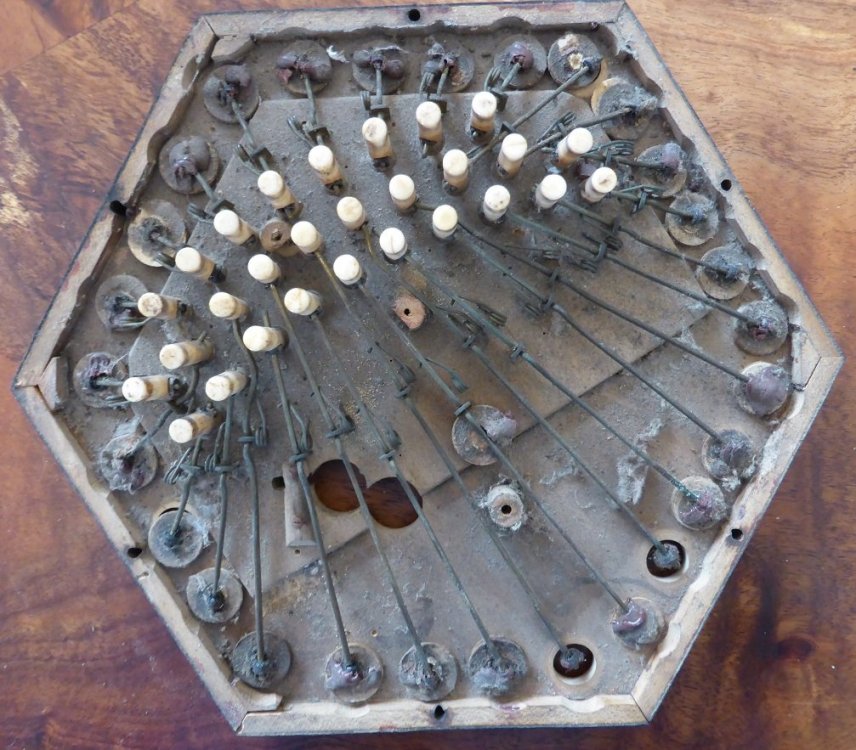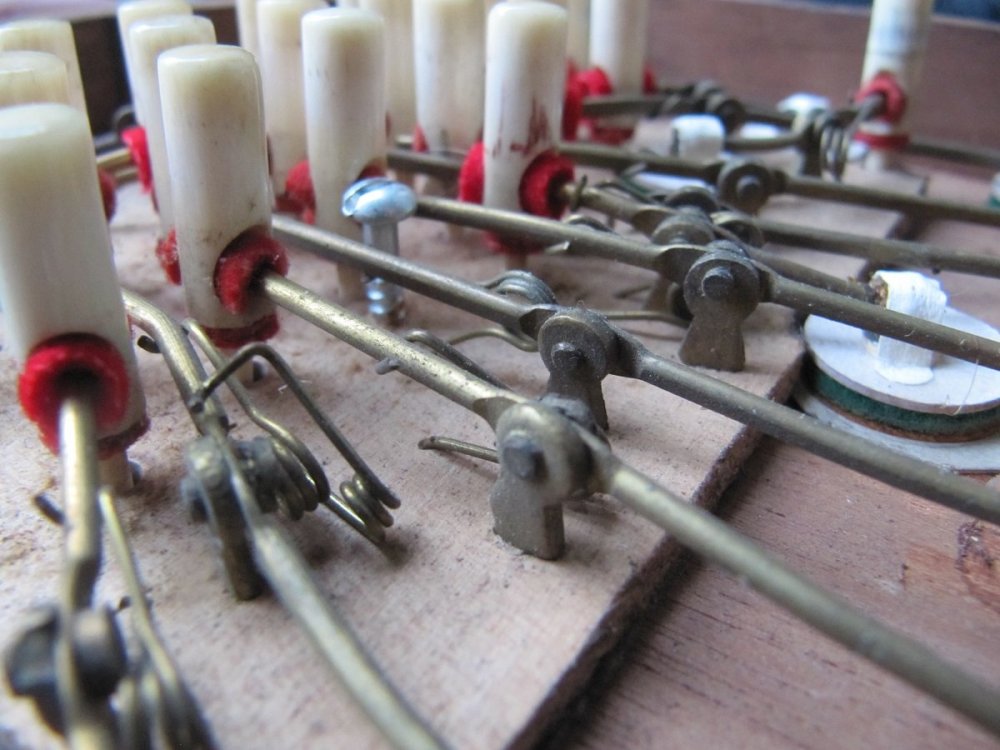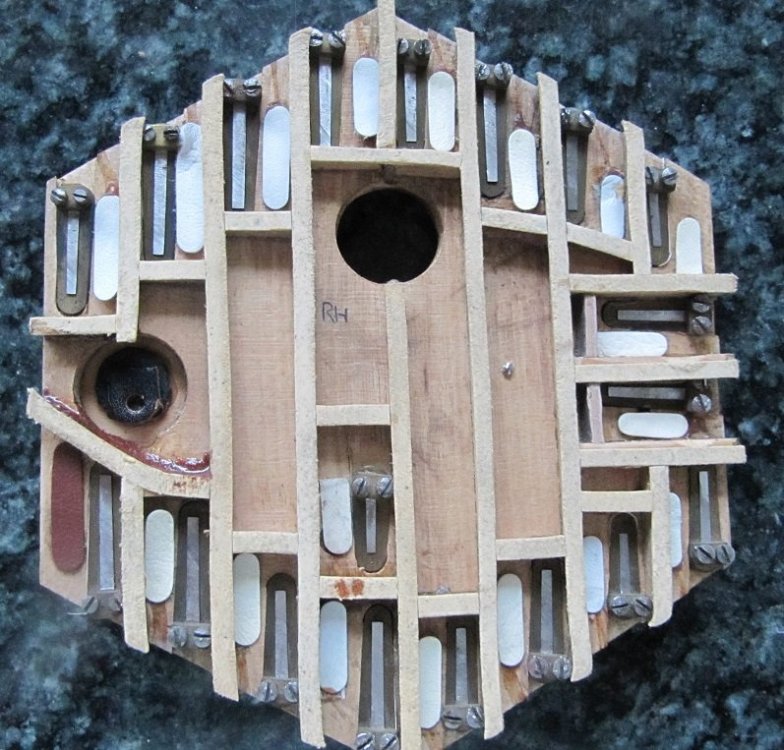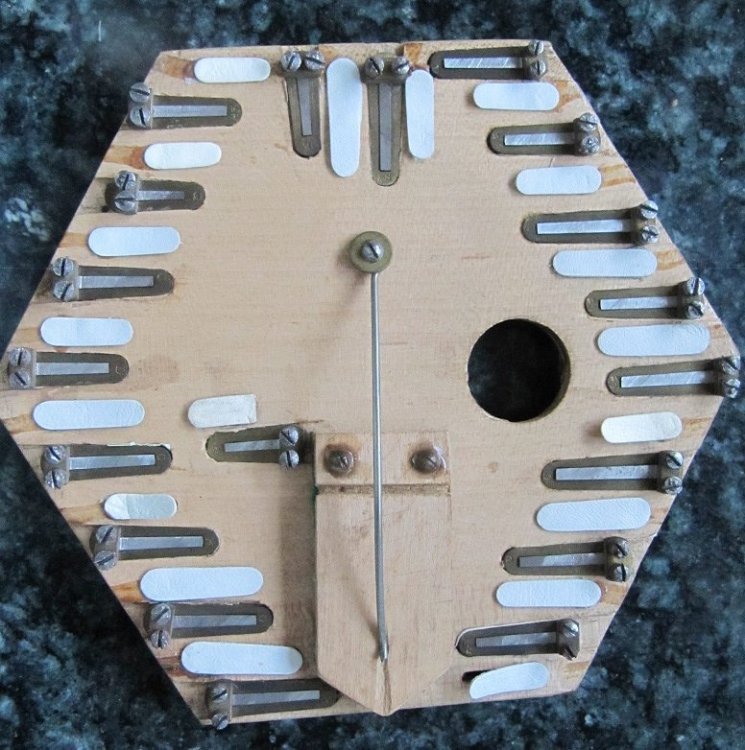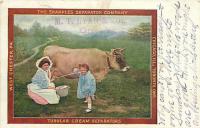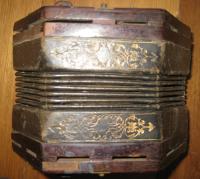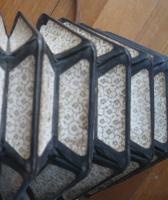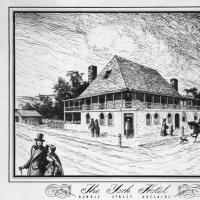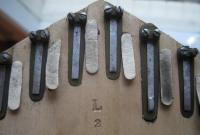
David Aumann
Members-
Posts
22 -
Joined
-
Last visited
Profile Information
-
Gender
Male
-
Interests
Irish anglo
-
Location
Melbourne, Australia
Recent Profile Visitors
David Aumann's Achievements

Member (2/6)
-
Lachenal Anglo steel reeded in keys A-E
David Aumann replied to d.elliott's topic in General Concertina Discussion
I have a 20 key, rosewood ended Lachenal in A/E. Serial number 57778, labelled Thos Dawkins. It’s the original tuning as reed stampings correspond to actual pitch. It has the Lachenal trademark. Probably dates to about 1879(?) Found in a bric a brac shop in northern Tasmania. -
Dating A Lachenal From The Serial Number
David Aumann replied to johnconstable's topic in Concertina History
It's about 1877, but I defer to those who know more than me. It's the upper end model of Lachenal & Company's 20-key range. A very nice concertina. -
For what it's worth: I bought a concertina from a UK auction last week. For 35 GBP, UPS collected it on 17 Sept, protected/boxed it VERY well, and delivered it by courier to my home in Melbourne, Australia yesterday , 23 Sept. It was easy to track all the way through Denmark, France, Kentucky, Hawaii and Sydney via their app. I couldn't fault the service.
-
First, can I say that if this is not an appropriate post, I'm happy for administrators to remove it. A year or two ago I bought a Lachenal anglo from Gumtree, an Australian market site. It was a rosewood-ended model with extensively damaged ends, the missing fretwork replaced by some black “bog”. The bellows were made of leather that had degraded much more than usual and a previous owner had tried to preserve whatever life they had left by re-papering them with floral wallpaper, supplemented by sticking plaster and even a couple of Band Aids! Internally a few pads were missing, replaced with medical gauze (!?) Needless to say, it didn’t play. The major damage present made me think its serial number of 60911 was somewhat appropriate. All reeds were present and the reed pans and action boards looked better than I anticipated. So, although I only bought it for spare parts, I decided to restore it. Regretfully, I didn’t photograph the bellows in their original sorry state. I thought I could make a set using Bob Tedrow’s instructions on the internet. So its original 5-fold bellows became 7-fold bellows with the folds 1 1/8” deep. I replaced the old chamois with new. I made a cardboard/felt/soft leather sandwich and cut a set of pads using a cutter I made that fits on my drill press. I thought I was going to have to hand cut a set of ends, but as luck would have it, one of your members, David Hornett, had a pair that was the same fret pattern. The only snag was that the eBayer who sold the ends to him had cut them from a concertina by fret sawing around the inside of the end frame. This meant they were too small, and all the corners were slightly rounded where they’d been cut around the original concertina’s interior strengthening wedges. So I ground each corner flat and made a small filler piece to regain the original hexagonal shape, which still needed over ¼” added to each edge in order to fit my concertina. Because the rosewood was rather dark, I used ebony for the edge pieces, thinking that amber French polish would make them a not-too-bad colour match. I steamed the broken ends off my concertina and used the buttons on each end as a method for centering the now-oversized new ends. With a guitar binding jig I trimmed the edges flush and then cut a chamfer around the edge. Now, from arm’s length, it looks okay and it plays! No doubt it will outlast me. I’m no repair expert, so there may have been better ways to do the things I’ve done. I’m happy to hear … I’m attaching a few pics of the process.
-
Dating A Lachenal From The Serial Number
David Aumann replied to johnconstable's topic in Concertina History
Stephen, the construction of the one good end is typical Lachenal anglo construction. Undo the bolts and the end splits in half, revealing the action. Take the whole end off and you get to the radial reed pan. -
"But. of course, the earliest Jeffries concertinas were made by George Jones" I didn't know that. I have a concertina here that, to my untrained eye, looks a bit similar to the concertina at the start of this post. I was told was a Shakespeare, but it has a Jones action, no serial number, trapdoor air button (as on another Jones I've seen), and the ends are Jeffries pattern but cut coarser. My simplistic understanding was that Shakespeare was an assembler of parts that could have been bought from a variety of sources (or that "a Shakespeare" was a convenient way of describing a hard-to-identify non-thoroughbred concertina.) I'm just posting because of the similarity to Alex' post.
-
Dating A Lachenal From The Serial Number
David Aumann replied to johnconstable's topic in Concertina History
Thank you so much, Dowright. -
Dating A Lachenal From The Serial Number
David Aumann replied to johnconstable's topic in Concertina History
Hello Dowright, can you please date a Lachenal a 28-key anglo serial number 70510. It's the one shown a couple of posts further up the page, with all buttons on one end? I think Lachenal only began anglo production about 1862, so I'd hazard a guess at 1870-1880, but I'm curious. Thanks, David -
Dating A Lachenal From The Serial Number
David Aumann replied to johnconstable's topic in Concertina History
Can I get help dating this weird Lachenal that I have posted here twice before (1999 and 2014). It's a 28-key instrument with all buttons on one end and nothing on the other. Serial number is 70510. Thanks so much. -
28-Key Lachenal - All Buttons On One End.
David Aumann replied to David Aumann's topic in Concertina History
I'm bringing this out of mothballs one more time, because I put up a posting on the Australian group Concertina Convergence and it caused quite a bit of interest. Thinking along the lines of an instrument for an amputee (or vaudevillian, or other player who could only use one hand for whatever reason), I'm wondering if someone can put a reasonably accurate date on the instrument. Its serial number is 70510. I took a wild guess at circa 1890 as a date and, as Malcolm Clapp rightly said, this would be too early for a soldier returning from the Boer Wars. But the Brits were involved in may other skirmishes in the late 1800s, including the Burmese War, Zanzibar, Tibet, India, Sudan, Boxer Rebellion and maybe others. It's all a bit academic but it gives me something to think about! Thank you to all past responders who came up with some fabulous theories and snippets of information. -
There was a similar post three or four years ago which culminated in a scanned image of a Jones label. Check this: http://www.concertina.net/forums/index.php?showtopic=15501 You might have to "distress" it a little ...
-
Hi Chris, No, it's here in Melbourne. The repair note inside it had the date 3/1/85 (I think it says) and the maker is "3 doors East of York Hotel". I found this:The very first of them (the Adelaide hotels) was built here within a year of the foundation of the city and soon became THE place for travellers to stay. Any person of note made the York Hotel their headquarters, and as its reputation grew so too did the hotel. A smoking room, a card room and a new dining room were added for the state’s jubilee in 1887. Many wealthy and retired gentlemen also made this hotel their home, including a Dutch Admiral who could be seen on most days in the mid 1860’s in full naval dress, pacing up and down the balcony! The lease for the York Hotel was ultimately purchased by William Gibson who had grand plans for the site, and he demolished it to make way for an impressive building to house both a new luxurious hotel and an emporium. From this description, it seems reasonable that the repairer would describe his location in terms of the York Hotel. Foy and Gibson eventually bought the land and replaced the hotel with a department store in 1920. So this must be an 1885 repair. I wondered if blocking off the novelty buttons was part of it, and when that scrap of newspaper dated from. I found this: Philip M. Sharples (1857-1944) was the inventor and manufactuer of Sharples Tubular Cream Separator which sold worldwide including Australia from the 1890's to the 1930's. The machine which separated the rich butter fat from the raw milk was manufactured by Sharples Separator Co. David
-
I have now had a better look at this concertina, and photographed it from several angles for your perusal. I think it HAS to be an early Jones. There is no serial number I can see, unless a hand written 5614 on the left hand reed pan could be it. One interesting thing is that it was tuned and repaired in 1885 by someone called H Drechuls (??) from Rundle St, Adelaide. Has anyone heard of him? I think I'll just post the photos and ask for comment.
-
28-Key Lachenal - All Buttons On One End.
David Aumann replied to David Aumann's topic in Concertina History
The strap on the solid end looks like a bit of bush carpentry to me. It's certainly not an original fitting. It's held on by two round-headed "nails" that look a bit like thumb tacks. Thanks to all who are contributing to this post. I know nothing of its origin nor the purpose for which it was built, so all of these suggestions and comments are really interesting! Regards, David -
28-Key Lachenal - All Buttons On One End.
David Aumann replied to David Aumann's topic in Concertina History
Thank you for this! Something like that had never occurred to me. This instrument is in C/G, and is exactly the same as if it were a regular 28-key Lachenal with the left hand just transposed across to the right hand side. Just like on the linked chart (for 30 key Wheatstone) but with notes from both hands run together and without the two outside buttons on the accidental row. Thanks for taking an interest! David

